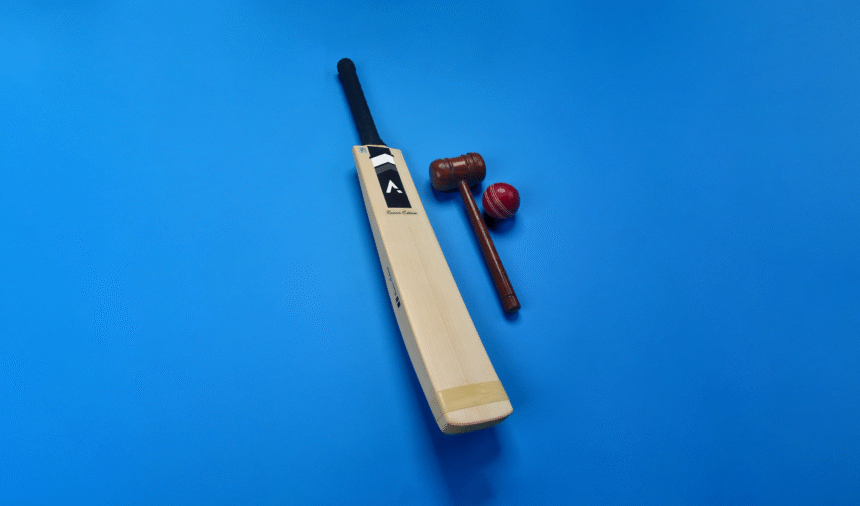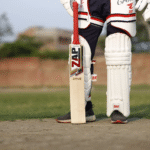Guide to Cricket Bats and Knocking, Cricket bats are not just tools but critical extensions of a player’s skill set, capable of influencing the outcome of a match. Proper selection, preparation, and maintenance in 2025 are paramount to achieving peak performance. One of the most important yet often overlooked aspects of bat preparation is knocking-in, a process that conditions the cricket bat’s surface to withstand impact and enhance durability.
This extensive guide dives into the science and technique behind choosing the right cricket bat and perfectly knocking it in for 2025 standards, ensuring players get the maximum benefit from their investment.
Understanding Cricket Bats: Types and Materials
Willow Types
-
English Willow: Favored by professional and serious players for its lightness, superior grain, and power rebound.
-
Kashmir Willow: More affordable, heavier, and harder but less responsive, commonly used by beginners and practice players.
Bat Grades
English willow bats are graded based on grain straightness and number:
-
Grade 1: Finest quality, generally 8-12 straight grains.
-
Grade 2 and 3: Visible imperfections, fewer grains, but more affordable with decent performance.
Choosing the Right Cricket Bat in 2025
-
Size and Weight: Match bat size to your height; weight depends on playing style and strength.
-
Handle Style: Oval handles provide better control; round handles offer traditional feel.
-
Blade Profile: Thick edges and high spine for power; slim edges and lower spine for finesse.
-
Brand Reputation: Opt for reputable brands ensuring quality and after-sales service.
The Critical Role of Knocking-In
SS Bat Knocking-in compresses and strengthens the willow fibers on the bat surface, preparing it for the impact of cricket balls and reducing cracking risk.
When to Knock-In
-
New bats always require knocking-in.
-
Bats repaired or unused for extended periods may need re-knocking.
Tools Used
-
Wooden mallet or old cricket ball are preferred for gentle, controlled knocking-in.
How to Knock-In
-
Warm-Up: Start lightly tapping all areas of the bat face and edges.
-
Gradual Increase: Slowly increase hitting intensity over sessions.
-
Edge Knocking: Tap edges and toe to reinforce vulnerable areas.
-
Duration: Spread 6-10 hours of knocking over several days or weeks.
-
Finish with Real Ball: Use an old cricket ball near the end mimicking game impact.
Avoid
-
Avoid hitting the bat with excessively hard objects.
-
Do not rush knocking-in; damage can occur from rapid, forceful tapping.
Oiling the Bat
Oiling preserves moisture, provides surface protection, and improves willow flexibility.
-
Use raw white linseed oil.
-
Apply thin even coats to the face, edges, and toe.
-
Let oil soak for 24 hours, then wipe excess.
-
Repeat periodically (monthly or bi-monthly).
Storage and Maintenance in 2025
-
Use a bat cover to protect from scratches and moisture.
-
Store vertically, away from heat, humidity, and direct sunlight.
-
Clean bat surface after every use.
-
Regularly check and renew protective tape on edges and toe guards.
Common Mistakes to Avoid
-
Skipping knocking-in altogether.
-
Over-oiling causing wood softening.
-
Using improper balls like tennis balls for knocking-in.
-
Leaving the bat exposed to weather extremes.
Professional Services and Innovations
Guide to Cricket Bats and Knocking, Some players opt for professional knocking-in and preparation services offered by manufacturers or cricket academies, ensuring expert treatment and warranty compliance.
In 2025, cricket bat technology has advanced to include factory pre-knocked and oiled bats, but even these require additional home knocking-in for optimal conditioning.
High Authority Reference
For detailed tutorials and expert advice on cricket bat selection, knocking-in, and maintenance, CricketStoreOnline remains a definitive resource for players in 2025.
Read More: SS Kit Review: What’s Inside and Why It’s Worth It
Conclusion
Guide to Cricket Bats and Knocking, Choosing the right cricket bat and mastering the knocking-in process in 2025 are pivotal to gaining maximum utility and enduring performance from your bat. By understanding bat types, materials, and careful preparation methods, cricketers can enhance their gameplay and protect their investment.
Proper knocking-in and ongoing maintenance transform a new willow bat into a reliable partner that withstands the rigors of competitive cricket over multiple seasons.






